Recently I’ve seen that contortion coaches have been taken upon the idea of organizing contortion retreats in Mongolia, and started to see pictures online of these happy souls, students training together in probably the most inspiring environment you can create: guided by Mongolian coaches in the land of contortion which is hands down, Mongolia.
This has gotten me thinking about my trip there. I never wrote a Part 2, but you haven’t read Part 1 you can do that here, before you go on with this post.
The reason why I never wrote Part 2 is… well, that trip was a very mixed experience for me and probably not the best trip, for several reasons. I’ll try to tell you about what I liked, what I disliked and what I remember, because it happened 7 years ago.
Nobody knows but 2016 was my “2020”, it was one of the roughest years (going through the pains of divorce) along with also some of the greatest moments (becoming a citizen of the United States, gaining double citizenship along my Italian one).
Of course I planned my trip to Mongolia a long time before and when the time to go there came, I had not the right mindset, I was distracted, thinking about boys to get my mind off the emotional mess I was in, at the time I was not spiritual at all, I had no tools like I do now to get my mindset back into place, I haven’t done yet the “work” (I should talk about this on another post). So this trip happened at the wrong time and if life shows you what energy you’re bringing forward with concrete events and occurrences, this trip reflected my messiness.
The main reason I chose to do this trip was to experience Mongolia with my coach, train, learn about the culture and just have this experience be the ultimate sign of commitment to this art I was in love with, and still am. Like I described in Part 1, there were beautiful, meaningful moments on this trip and I think what I loved most were the generosity and hospitality of locals, the Buddhist temples and palpable, sacred energy you could feel around these places, the vast green fields, right outside Ulaanbaatar, where animals and nature prospered.
As you can tell, I STILL haven’t mentioned training because… well, there was very little of it unfortunately. For a few reasons: one, when my coach usually goes to Mongolia in the summer, it’s her vacation time. She took me and my friend Kristi with her almost everywhere, which majority of the times included visiting her friends and hanging out with them (trying to make sense of the Mongolian language) but not training much at all. On our own, we were pretty clueless: obviously nobody talks English, not even taxi drivers. It’s a third world country, what is there to do is quite limited and I’d say in some cases you’re targeted as a tourist (I got pick pocketed on the streets).
We went to see traditional singing and dancing shows, Genghis Khan museums, but for the most part Mongolia is contortion, circus, Buddhism and luscious green lands… and a lot of vodka (I cannot tell you how many times I had to turn down shots of vodka or pour them somewhere, it was considered borderline offensive to refuse drinking when offered. One day out of desperation and boredom I decided to get drunk and visited a temple right after. It was kinda sad and hilarious at the same time, see below).
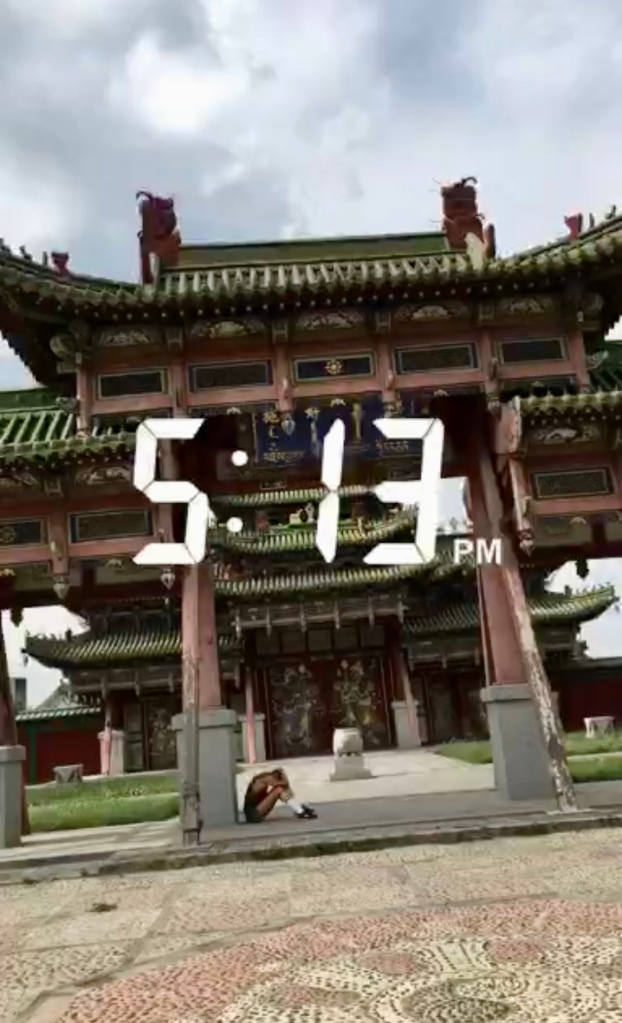
Now for the contortion part. I’m going to be honest with you. What you see in the US or anywhere else in the world, is a very DILUTED version of (Mongolian) contortion. If you take some time to read about this country’s history, you’ll learn it was formed by Genghis Khan around 1200 and in more recent times ruled by communism, oppressed by extreme poverty and harsh conditions (not to mention the coldest winters you can imagine) and contortion started being practiced as a performing art around 1940 but it wasn’t a beautiful discipline people would aspire to do out of enjoyment or to pursue a calling or a passion, but the ONLY WAY to gtfo of the country, make a living elsewhere and send money to help families survive.
So when I went to the National Circus School of Ulaanbaatar, I saw what contortion really was. It was a hope for a better life and future, joining the circus was a way out, to make it somewhere else. I remember entering in this light green room and seeing the coach of my coach, the legendary Norovsambuu (it felt like seeing a divinity, she was one of the very few first Mongolian coaches).

She was sitting on this chair, with a cane on her side, and a very austere look on her face. I even sensed a change in Otgo, I could feel the history between the two, and I remember all the hard stories Otgo would tell me about her coach. … she was hard, very hard on her, and confusingly it was because she knew how good she was and wanted to bring out the best performer in her. The energy was intense, and I felt in a way that I was an intruder in that reality. I started looking around watching the youngest kids ever busting out triple folds, cheststands, handstands push ups, 1 hand handstands without batting an eye. Everyone was just working. There was no whining, because these kids knew nothing but hard work. They would help each other, coach each other and attentively listening to the cold voice of Norovsambuu.
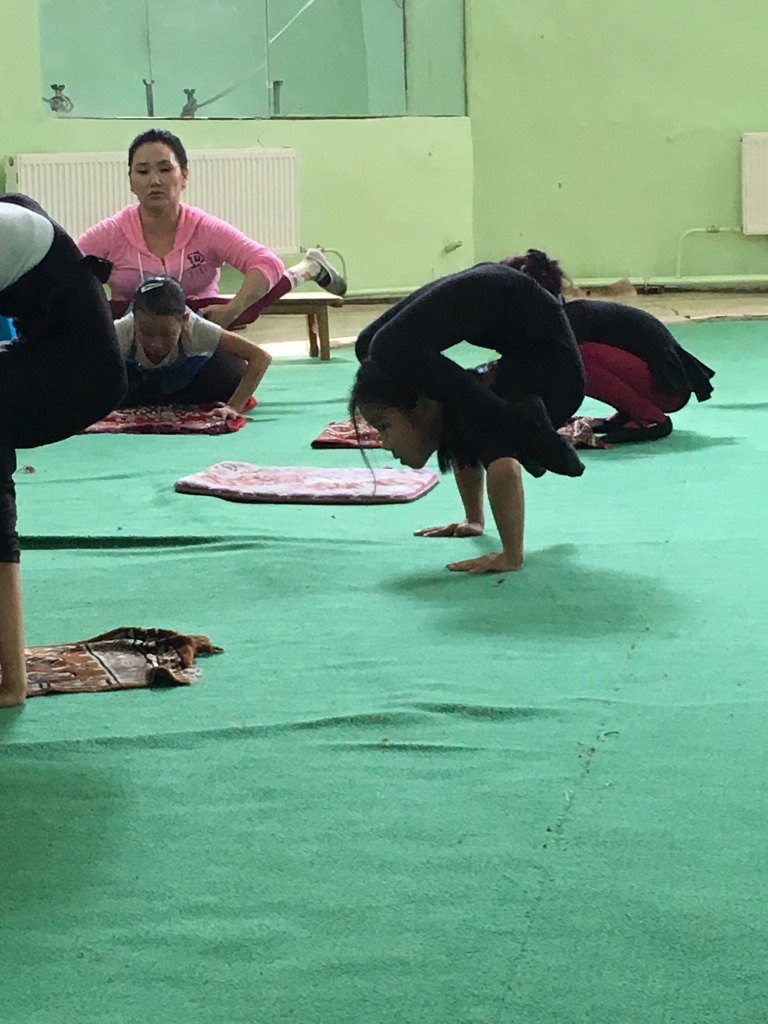
I felt as I was robbing them of something very sacred and private by wanting to be part of that world. I was million years away from their reality, all I could really do was feeling respect towards them and gratitude for being there, witnessing and learning all these lessons. I did not want to train with these extraordinary little girls, even though that could have been a possibility. I learned what contortion really was right there in that moment.
What I do with it is different, I don’t train to be in the circus, or “make it” somewhere else. I train contortion because 1) I had a coach that made me love it through her teachings 2) it taught me hard work, discipline, resilience, commitment and 3) it made me feel nothing is impossible. If I can move my body like that starting at 27 year old, it’s not just because I work hard but also because I tapped into a place, in my mind and heart, of infinite potential and once I have a clear intention and the right attitude toward it, it just GIVES.
So I love “my Contortion”, the way I live it and why, but it’s not how they lived it, there was this fundamental discrepancy of needs and motivation behind all the hard work, I did not need contortion to get a better life or was I motivated by what I’d gain from it; I chose it (many didn’t, more likely forced into it) and thankfully I never had to know hardship like they did. That’s why I didn’t participate in training with the lovely little girls, I absorbed that moment and that was enough for me. All the tricks, and exercises… I didn’t need to do them right there, because I had my coach and a will to come back home and train even better and harder after this experience, for me.
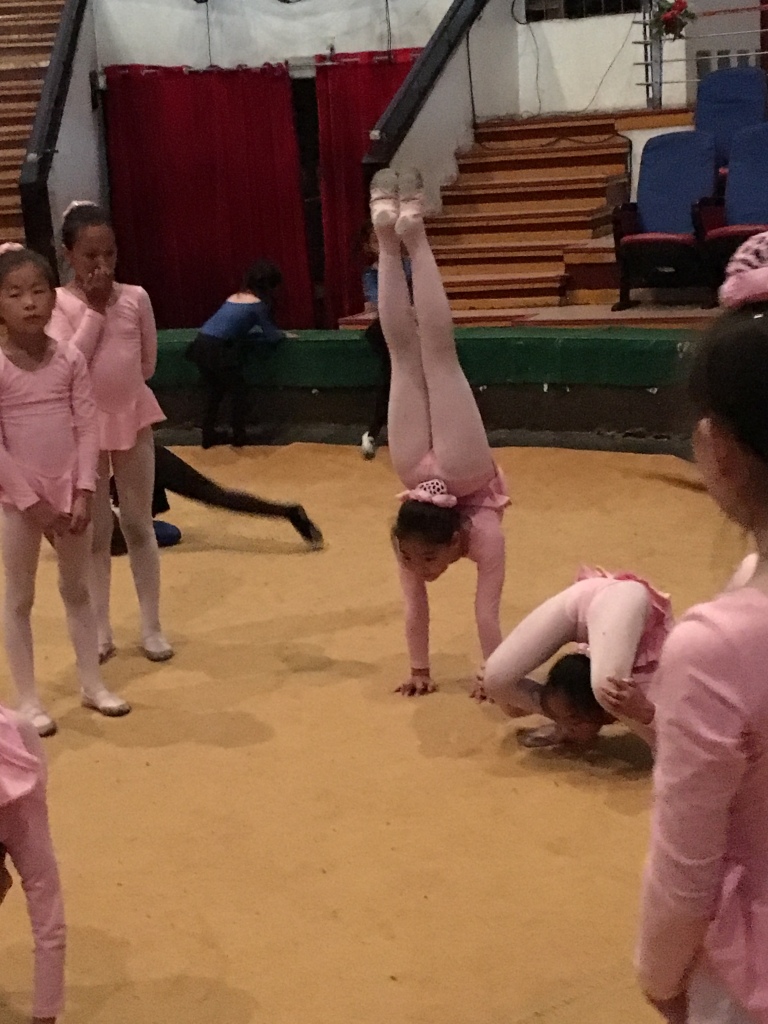
So I never took classes or attended a retreat in Mongolia, it definitely could have been exciting and motivating to share such experience with other passionate practitioners like me, of my age as well, but at the time there was no such thing. The level was SO HIGH, what was I thinking to even do with them? Lol.
I happily witness, took mental notes and after that went to see probably the biggest contortion show ever, at the 75th Anniversary of the Mongolian circus. Here’s some more pics from that day, to give you an idea of the mastery and level of performance these little girls aim for at such young age.
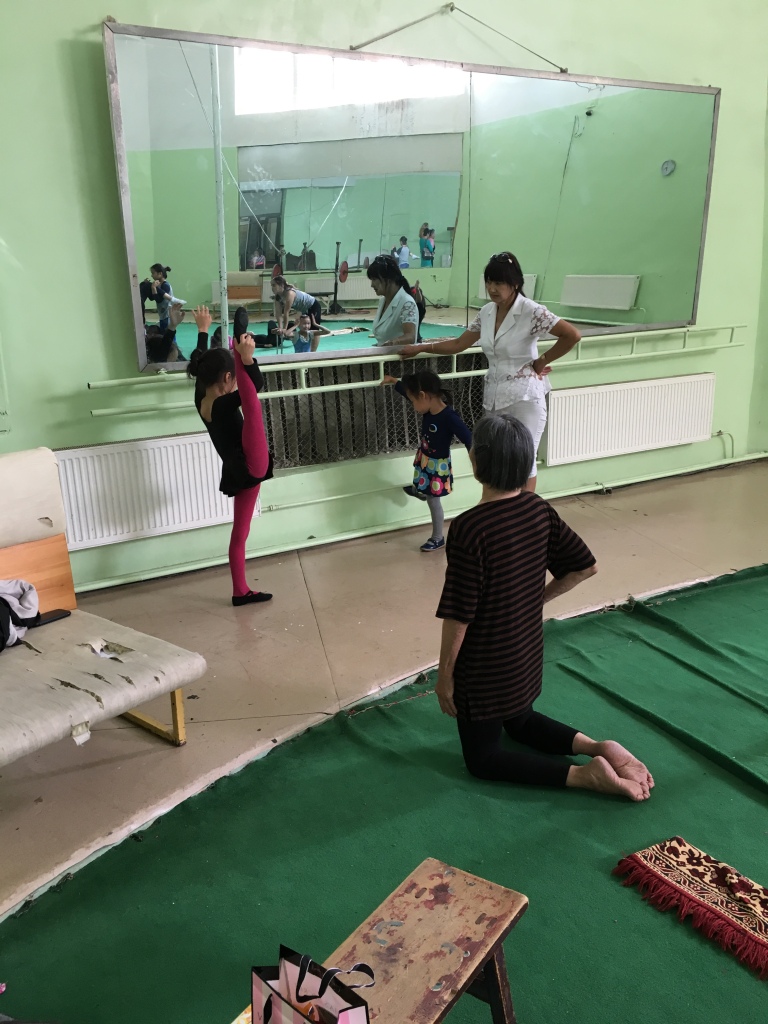
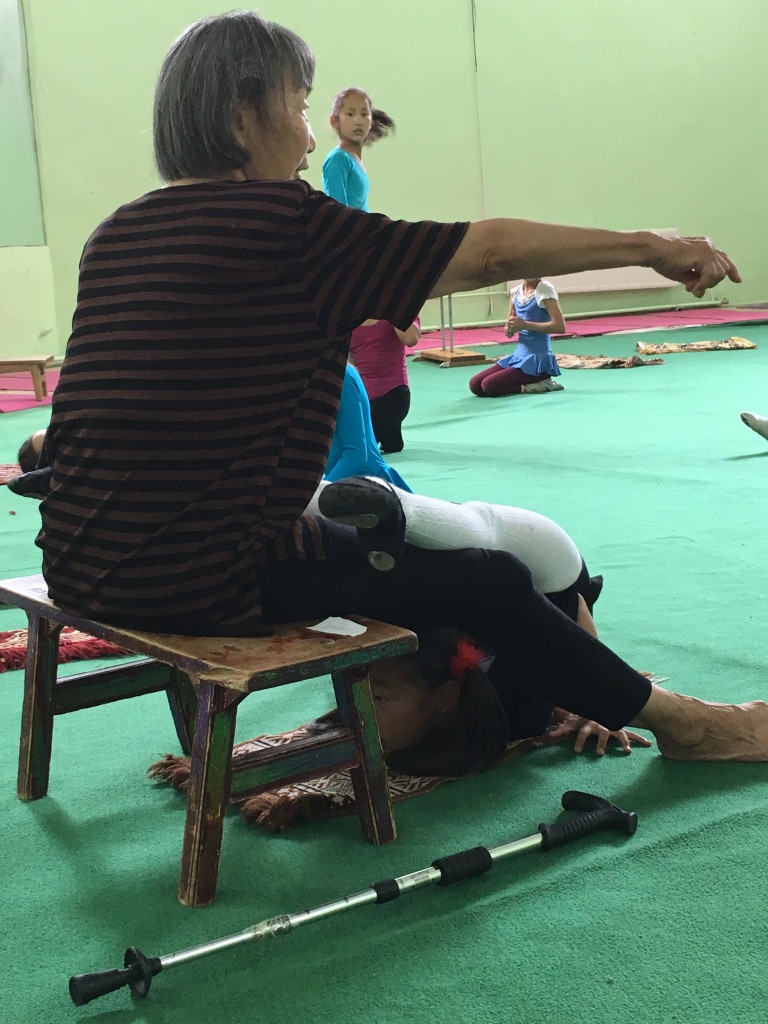
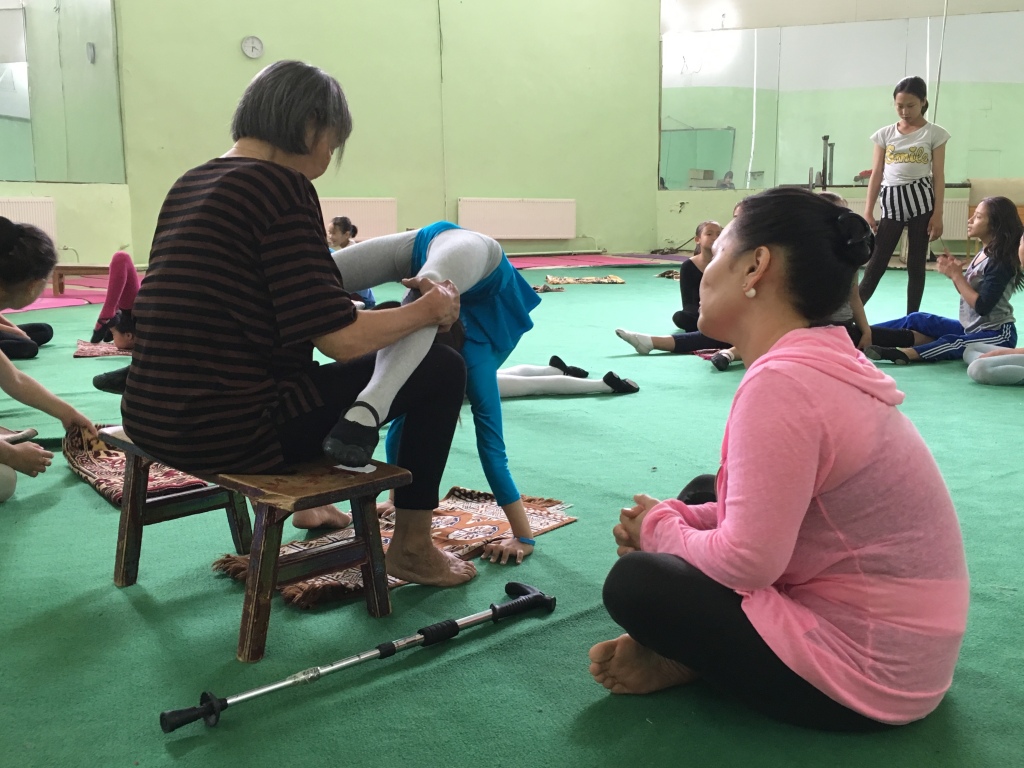
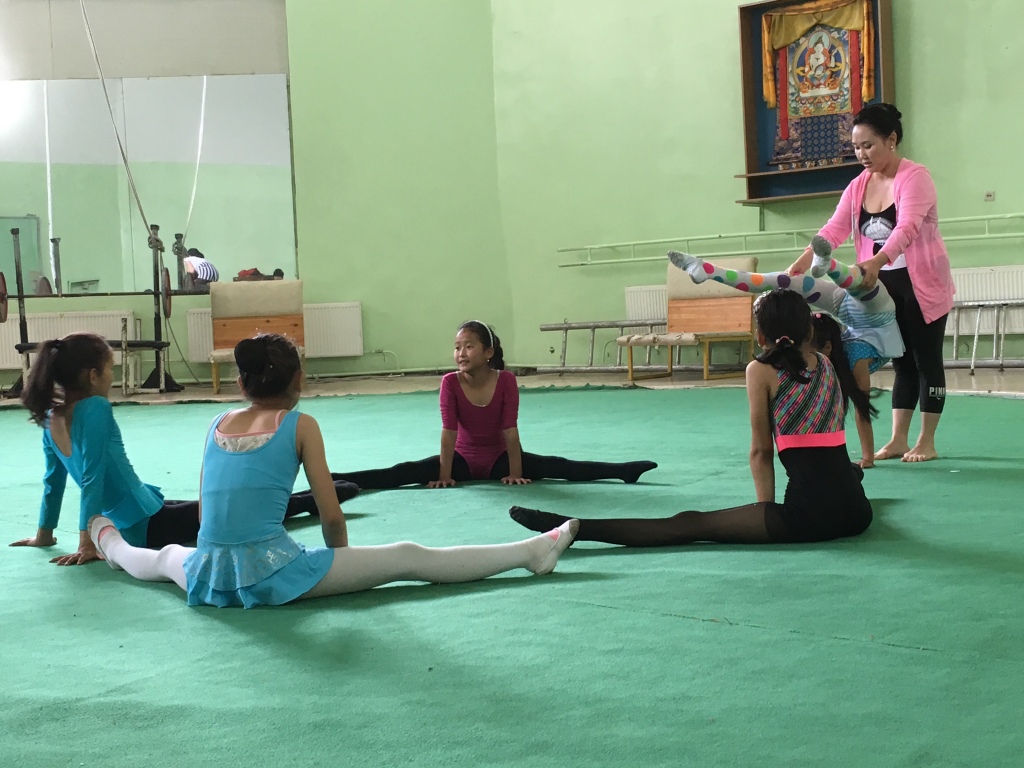
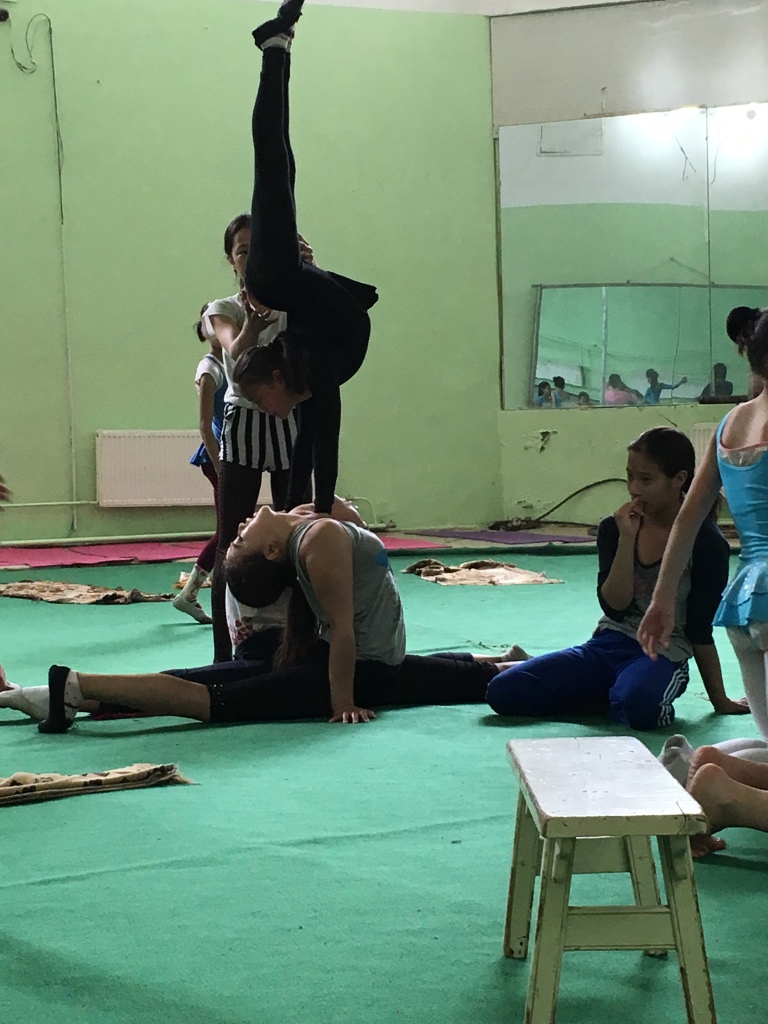
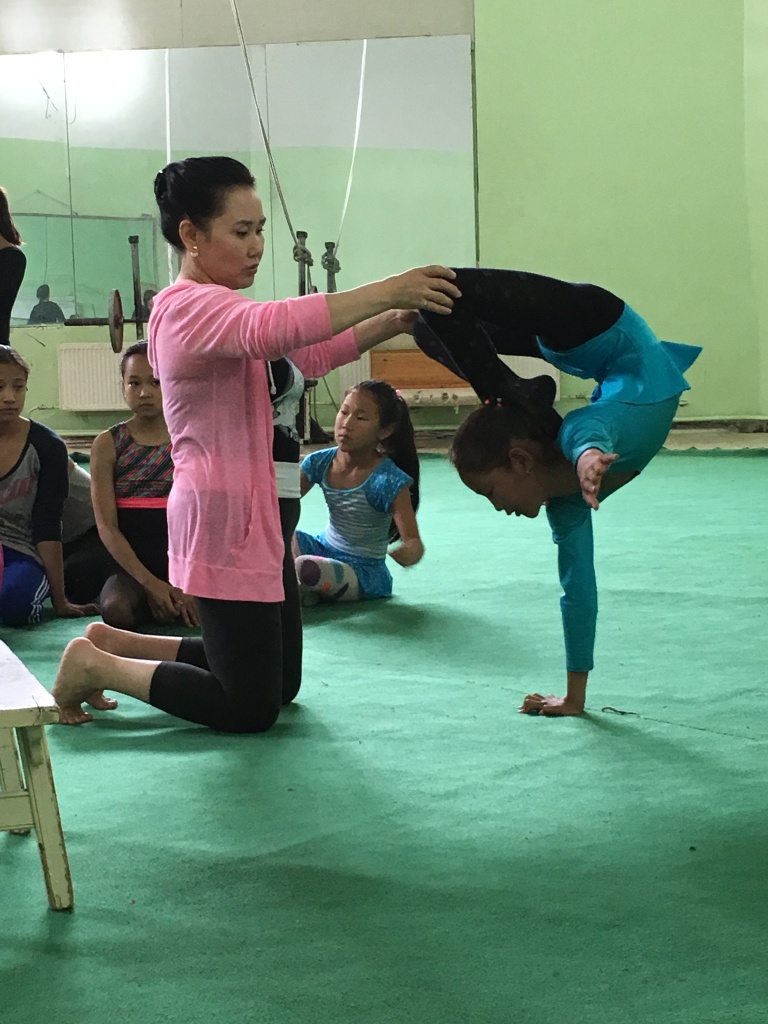
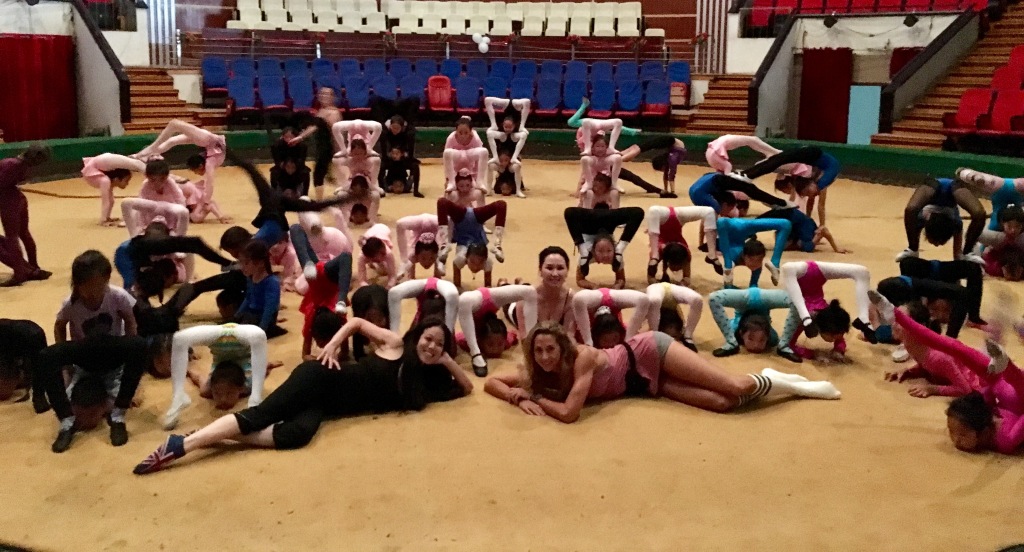
The last thing I want to add to this already lengthy post is, Mongolians seem to be pretty competitive with one another, especially those who “makes it” outside the country, I feel they’re seen with jealousy by the ones who don’t, it feels that some sort of rivalry exists between coaches in a way and there is a motivation to prove who is the wealthiest or most successful, who can bring most money or gifts back, get interviews by the local TV and so on. That’s what I felt personally but I can’t state as true. If you become successful outside of your country (as getting a good job, making money or just living comfortably) you come visit like a sort of celebrity. So I felt there was also this kind of pressure between performers and coaches abroad wanting to show to their own people who got the best deal going on.
Anyway, if you made till here… thank you for reading. This post was LONG due… I swear it won’t take me another 7 years to write again. But this is my experience of Mongolia, for a while I didn’t want to write about it. It had highs and lows and I was going through a rough time, still trying to make the most of what I could back then. If I would have gone now, it would have been a very different experience but well… we don’t get to always choose the right time for something.
With love,
Sofia
Sofia! I’ve missed your banter 🙂
Ahahahahha there you got some 😂
Love you girl!!! It’s always a tre